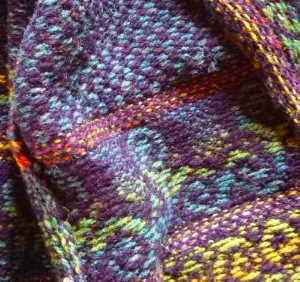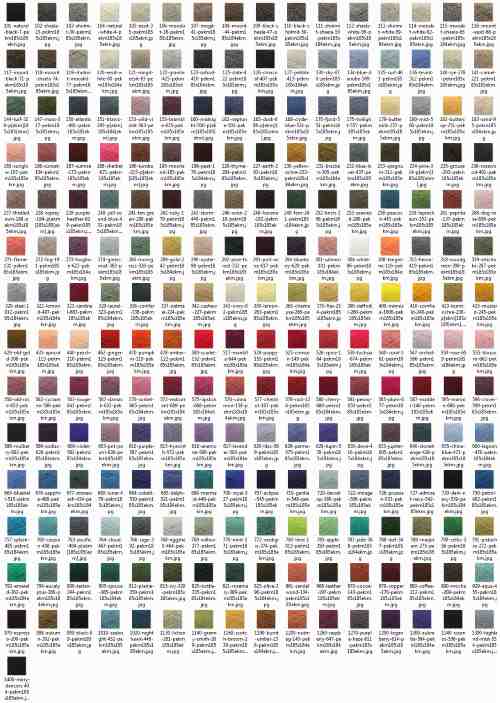Fairisles of Quality & Distinction
Newsletter |
 |
HOME Sale KnitKits & Patterns Resources Contact About
|
ACCUEIL Vente KnitKits & Patrons Nous contacter Infos
|
|
Let me explain how I design my knitting patterns...
I create my designs in the traditional fairisle knitting technique of Fairisle (islands situated in the north Atlantic, to the north of Scotland) using 100% genuine shetland wool from Shetland.
Two colours are knitted into each row, the colours alternately carried behind the work, to create a soft and lightweight double-layer fabric that has excellent insulation qualities.
I use twelve or more colours for each design to create rich colourways that you can wear with anything.
|
Pour expliquer comment je crée mes patrons à tricoter...
Je crée mes propre motifs au style traditionnel "Fairisle" (des îles situées dans l'Atlantic Nord au nord d'Ecosse) en 100% laine de Shetland.
Ce jacquard à fils flottants de deux couleurs par rang fait un tissu double mais souple et bien isolant.
J'utilise douze, voir plus couleurs pour chaque
dessin pour obtenir des coloris riches à porter
avec n'importe quoi.
|
|
|
|
Why Shetland yarn...
Fairisle is traditionally worked in pure shetland wool which binds the floats together. The resultant fabric is soft and supple, with the air which is trapped within the fabric giving very efficient insulation.
Shetland yarn has some very special attributes that make it ideal for fairisle patterning...
Shetland yarn is often referred to as “sticky”, referring to the fact that it tends to cling to itself. This "stickiness" is due to its comparatively short staple length and crinkly texture of real shetland wool.
Once the finished garment is knitted it is washed to remove any dye residue and spinning oils. In the process the yarn blooms (much like a flower opens its petals). This is when the "sticky" quality of the yarn causes the fabric to become slightly thicker and more dense, with the floats at the back of the work meshing together so that they will not be caught and pulled in wear.
Other yarns such as cotton or acrylic which do not bind the floats together are not suitable for stranded colour work.
|

Pourquoi choisir la laine de Shetland...
La laine Shetland a des attributs très spéciaux qui le rendent idéal pour ce genre de motif en raison de sa longueur relativement courte et de sa texture froissée.
Une fois tricoté le vêtement est lavé pour enlever les résidus de colorant et les huiles de filature. Dans le processus, le fil "fleurit" (un peu comme une fleur ouvre ses pétales). Cet atribut du fil provoque le tissu à devenir légèrement plus épais et plus dense, afin que les fils flottants s'acrochent l'un à l'autre pour les attrapés et éviter qu'ils seront tirés lors de la vie du vêtement.
|
|
|
|
Why floats are a good thing!
Floats are the strands of yarn carried across the reverse side of stranded colour knitting. Some people think of these as an unwelcome characteristic of stranded colour work - but that is not the case at-all provided that the patterning motifs are properly designed.
This image is my own StarFire tunic that I've been wearing almost every day for over a year now. I designed the motifs in the traditional fairisle way - with floats of no more than 5 or 6 stitches length. This creates a rich complexity of patterning while ensuring that the floats do not become caught and pulled in wear.
If you wish to work a motif with floats longer than 6 stitches it is essential to catch the long floats. This is traditionally done by including peerie patterning (small filler motifs) within the design. Another alternative is to catch the over-long floats on the reverse side of the work. However they should not be caught up more frequently than absolutely necessary as this would create a less supple fabric more akin to jacquard.
Jacquard knitting is visually similar to fairisle/stranded colour work in that it shows two colours in each row, but the resultant fabric is very different due to the fact that both strands are knitted into the reverse of each row so producing a fabric that is far heavier, thicker and stiffer.
|

Les fils flottants!
Le tricot Jacquard est visuellement similaire au tricot fairisle ayant deux couleurs dans chaque rang mais le tissu est très différent.
Le jacquard a le deuxième fil tricoté dans le derrière de chaque maille - le tissu donc est beaucoup plus lourd, plus épais et plus rigide que le tricot fairisle.
|
|
|
Why Jamiesons Spindrift...
Here are the 225 colours of Jamiesons Spindrift which make possible the subtle colour-blending that you see in my designs.
The textural quality of shetland yarn lends itself to the "heather mix" colours which give the wonderful richness and depth to complex fairisle motifs.
Pourquoi choisir Jamiesons Spindrift...
Voici les 225 couleurs de Jamiesons Spindrift qui rendent possible le subtil mélange de couleurs que vous voyez dans mes dessins.
La qualité texturale des fils de shetland se prête aux couleurs "heather mix" qui donnent la richesse et la profondeur merveilleuses à des motifs complexes.
|
 |
|
|
Why Swatch...
Many knitters hate making gauge swatches but this is not a step to skip! You will spend a lot of time knitting the garment, so the short amount of time needed to make the gauge swatch is time very well spent to ensure that the finished garment will be the right shape and size.
If you have previously used a similar yarn you might mistakenly imagine that the yarn may be substituted if the yardage is the same. Unfortunately this is not so. Many yarns have the same yardage per gram or ounce, but the gauge can vary wildly.
The gauge swatch shows the number of stitches and rows that will make a 4-inch / 10cm square of knitting, using the needle and yarn selected for the garment. A separate swatch must be made for each different stitch pattern.
If you have too many stitches/rows to 10 cm/4 inches try again using a looser tension.
If you have too few stitches/rows to 10 cm/4 inches square try again using a tighter tension.
When you feel that you have achieved the right tension wash the swatch thoroughly in luke warm soapy water (max 40°c), rinse well and dry, then leave to rest for a few days so that the stitches settle to their eventual dimensions.
Depending on the type of yarn used the appearance of the fabric may be different after washing, as the yarn blooms.
|

Pourquoi chercher la densité:
Il est necessaire d'avoir une densité appropriée - une variation, même petite, affectera la forme et la taille du vêtement.
Il faut faire des échantillons de 60 m x 60 r. Si la densité ne convient pas il faut répéter le réglage.
Lavez les échantillons à main, eau tiède (max 40°c). Laissez les secher puis rester quelques jours pour les permettre trouver la densité. l’apparence du tissu peut être différente après le lavage, car le fil fleurit.
|
Here are some links to pages and videos that you may find helpful if you are new to stranded fairisle knitting:
How To Knit Stranded Fair Isle
How to make a provisional cast on with circular needle
How to make a provisional cast on with waste yarn |
Weave in ends as you go
Picking up hand-knit stitches st-for-st - 3 needle bind-off
Picking up machine stitches st-for-st for seams
Mattress stitch seam
|
|
Subscribe to my newsletter
|
Abonnez-vous à ma newsletter |
All designs featured on this website are the Intellectual property and copyright of Gooden Gansey © All rights reserved.
HOME Sale KnitKits & Patterns Resources Contact About
|
Le droit d'auteur de tous les dessins affichés sur ce site sont la propriété intéllectuelle de Gooden Gansey © Touts droits réservés.
ACCUEIL Vente KiTricots & Patrons Ressources Nous contacter
|